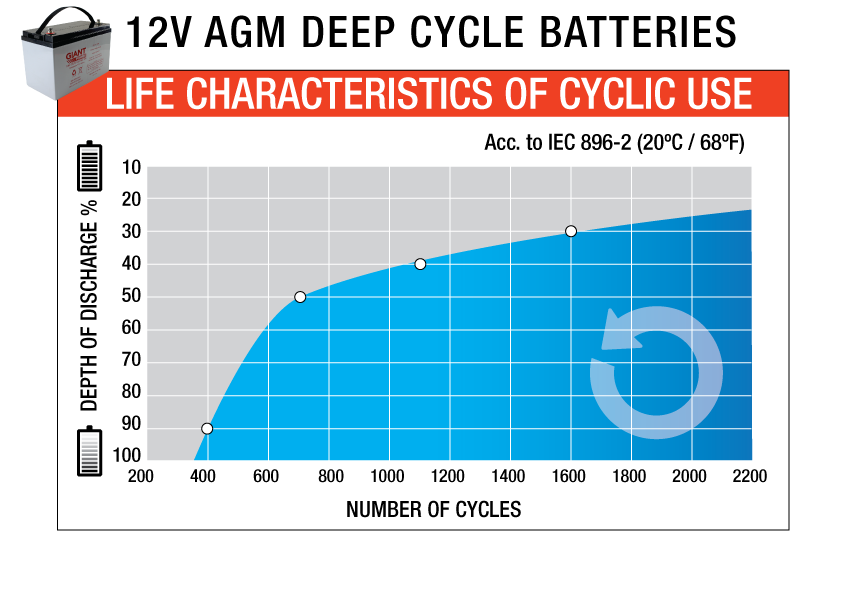I expect ten years of battery life because I rarely go below 85% S.O.C However having the amp hours to accomplish this also means that when I do run into days of bad weather I'll have enough power without having to fire up the engine or run a generator to avoid running my batteries too low. I do suffer a weight penalty to accomplish this but since I have a big heavy diesel this isn't an issue. If I were driving a half ton truck I'd definitely want to spend the extra for a lithium phosphate battery.
The 50% number is certainly arbitrary but I think its a reasonable compromise. I really like having a large reserve but if that isn't a concern you certainly could save some money with a single battery.
Wouldn't a longer life span also be a little more environmentally friendly?
That is the trick right, to get the longer life cycle, you are typically using about twice the battery, so they do last longer, but there is more of them to recycle. The total number of amp hours you get out of the battery over its life using either depth of discharge is about the same.

















